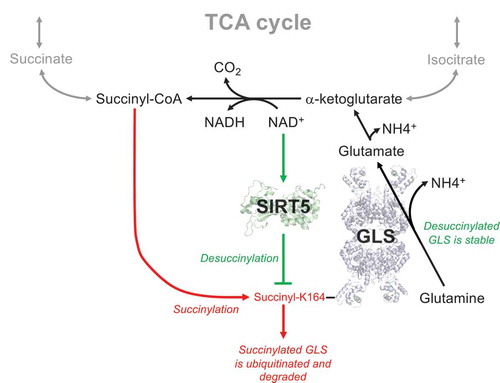Figures & data
Figure 1. Lysine succinylation and sirtuin 5 (SIRT5) connect nutrient availability to metabolic flux. Glutaminase (GLS) initiates the conversion of glutamine to α-ketoglutarate (α-KG) for tricarboxylic acid (TCA) cycle anaplerosis. Reaction of the TCA cycle intermediate succinyl-CoA with lysine K164 on GLS tags it for ubiquitination (at residue K158) and subsequent degradation. SIRT5 stabilizes GLS by catalyzing the desuccinylation of K164, a reaction which requires nicotinamide adenine dinucleotide (NAD+) as a co-substrate.

